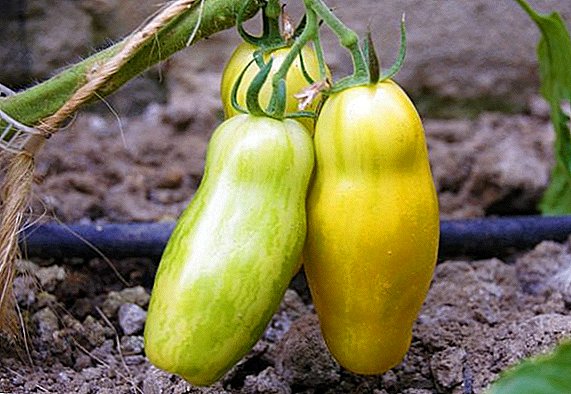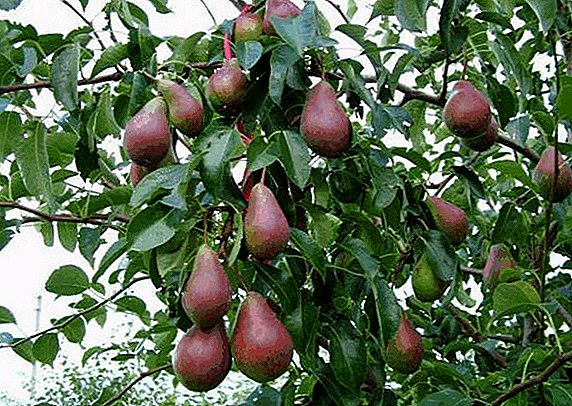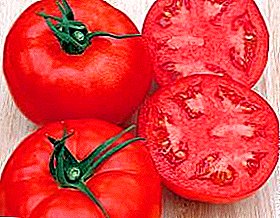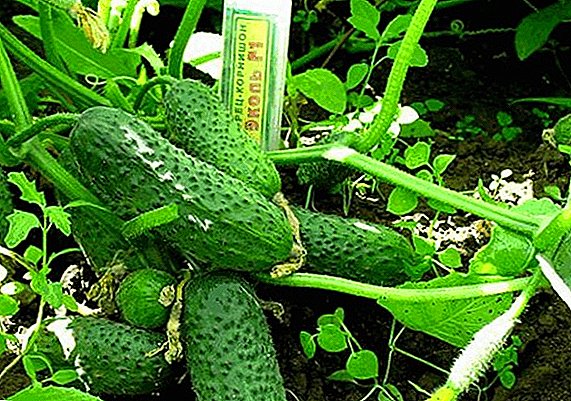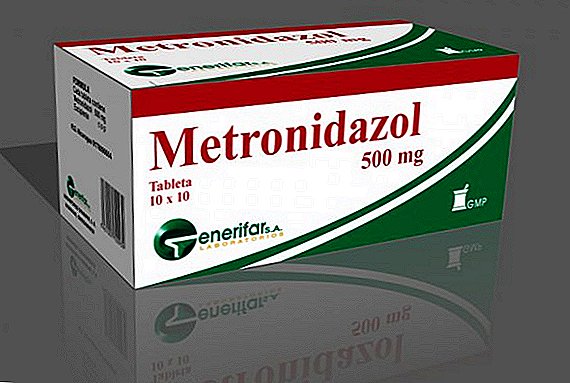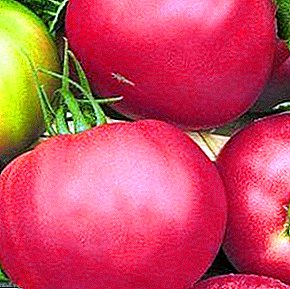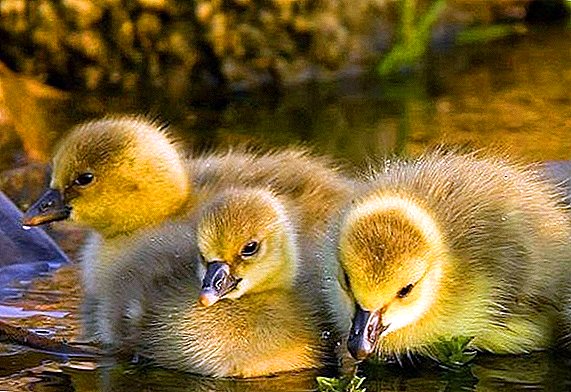 Goose is one of the most popular species of poultry that is bred in the household. Chicks are bred in two ways - by hatching eggs by poultry and in an incubator. In this article we will learn how to properly collect eggs for growing goslings and how to use a home incubator.
Goose is one of the most popular species of poultry that is bred in the household. Chicks are bred in two ways - by hatching eggs by poultry and in an incubator. In this article we will learn how to properly collect eggs for growing goslings and how to use a home incubator.
Incubator selection
The correct incubator will directly determine how many chicks will hatch. To do this, when choosing, you will need to pay attention to some features of the unit.
One of the main parameters when choosing is its capacity. Often for the household take an incubator for 30 eggs.
Important! When buying, specify how many goose eggs the incubator is designed for, since the number of goose is very different from chicken and others.

It is also important to focus on the country of origin. Almost every country produces similar devices. But most poultry farmers recommend buying domestic devices, because any incubator can break down, regardless of the manufacturer, and if you purchased “your” you will be easier to get service.
As for the internal structure, a very important parameter of home incubators is way of turning eggs: there is a manual and automatic. With automatic, trays with eggs lean 45 °, thereby rolling them to the other side. This method is considered more productive and safer.
Read also about the incubation of chickens, ducklings, hawks, quails.
You should also pay attention to the material from which the inside of the incubator. Trays made of foam, warmer, but strongly absorb odors and can break. Plastic is more durable and easier to clean, but they need additional insulation.
Choose a device with accurate temperature controllers and humid, digital regulators are best suited. Also note the presence of good ventilation.

Important! If in your area there are frequent jumps or power outages, then you should pay attention to the ability to connect backup power.
How to determine the breed for breeding
Before you put goose eggs in the incubator, you need to decide on the breed of bird that you will grow. Today, there are about 25 species in the world, which are divided into heavy, medium and light.
Heavy breeds - These are birds that are raised to produce more meat, and some are raised due to an enlarged liver. Large breeds include: Kholmogory, Linda, Toulouse, Landa, large gray, Emden geese. But the most common - Linda and large gray, other breeds are very difficult to find. You should also know that such breeds can produce no more than 50 eggs.
The average, most often, include expensive decorative birds (tape, Sevastopol curly, crested). The widespread Rhine geese also belong to the middle ones. Birds of this breed grow quickly, carry more eggs, but have much less meat than heavy ones.
Light breeds in net weight do not exceed 3 kg, but they carry an average of 90 eggs. Lungs include such popular breeds as the Kuban and Italian.
Did you know? On average, geese live for about 25 years.
The right choice of eggs
The hatchability of the goslings depends on the quality material, therefore, when selecting eggs, pay attention to all the details: on the shape, weight, condition of the shell. If there is any deviation, even the most insignificant, the egg is sent to the marriage. The weight of eggs should be from 140 to 160 g for the lungs, from 170 to 200 g for the heavy ones. The form must be correct and the shell durable.
You can select the eggs with the help of an ovoscope, which can be made by hand.
How to grow goslings
To get as much output as possible from the incubator, it is necessary to follow certain rules for laying eggs, monitor the temperature and humidity inside the incubator.

Egg laying
Bookmark material is a very important stage in the rearing of chicks. Here you need to take into account the time of day and time of year. In order for the chicks to be stronger, the conditions of the bookmark should be as close as possible to the natural ones. The period is most suitable for this. from the last days of February to the beginning of May.
Important! Before laying the incubator warms up to 38 ° C for 4 hours.Bookmark should be carried out in the afternoon, the optimal time is considered to be around 18:00, in which case the goslings will begin to hatch in the morning. Same themselves eggs should be laid horizontally - This will allow the fetus to develop without any abnormalities.
Before laying eggs in an incubator, it is strictly forbidden to wash them; at home, you can only treat with a light solution of potassium permanganate for disinfection, but a UV lamp is most suitable for this. For the bookmark only suitable material that is not more than 10 days. But if you failed to incubate them in time, then experienced poultry farmers recommend stably heating and cooling them in order to preserve the viability of the embryos.
Conditions for incubation
Incubation of eggs lasts about 30 days - this is the same as how many days a goose sits on eggs in the natural environment. If there is no automatic inversion in your incubator, you will have to do it yourself and often, at least four times a day, this procedure is necessary for proper nutrition, gas exchange and fetal development.
Did you know? In nature, the goose turns eggs more than 40 times a day.Such a procedure is also necessary so that the goose does not stick to the shell walls at the early stages of development, because sticking in the future may lead to its death.
Also need strictly maintain the correct temperature and moisture during the entire period of stay in the incubator:
- during the period from 1 to 27 days, the temperature should be 37.8 ° С, and from 28 to 30 days - 37.5 ° С;
- as for humidity, from 1 to 7 days it should be 70%, from 8 to 27 - 60%, and from 28 to 30 - about 90% ;.
- From 15 to 27 days you need to cool the eggs twice a day for 15 minutes.
When to expect chicks
The first chicks will begin to hatch after 29 days, with strict observance of the rules of incubation, hatchability may be about 85%, but there may be more, which is considered a very good result, given the complexity of the whole process.
In order for the goslings to be healthy, it is important to feed them correctly and to prevent the diseases of birds.
Novice bugs
Newbies very often allow many mistakeswhich lead to different consequences:
- If the thermometer is in the wrong position, it shows an inaccurate temperature, which in turn can lead to overheating or underheating, it is very important that the thermometer is flush with the shell surface. If overheating has occurred, the chick will hatch earlier, it will have thin legs and little fluff, and it may not hatch at all. When underheating, the goslings hatch later and at the same time cannot independently crawl out the shells, they have very thick down and plump legs.
- With a lack of moisture, the chicks appear very sluggish and small, often, they can not get out on their own because they dry to the shell. To avoid such a situation, it is necessary to spray the shells with clean boiled water three times a day.
- A very common mistake is infrequent coups that cause the germ to stick to the shell.
Incubator goslings: advantages and disadvantages of the method
The main advantage of this method is that about 30 eggs can be placed in the home incubator, while the hen can sit no more than 12 eggs. A huge advantage is the high percentage of hatching of chicks (adhering to the correct incubation conditions).
The disadvantage of this method can be called the need for constant monitoring on your part and energy costs, because the device should work around the clock, while it absorbs a lot of electricity.
As we have seen, the process of growing goslings in an incubator is very laborious, it requires a great deal of responsibility from you. But if you do it right, you can get a good brood of young.



